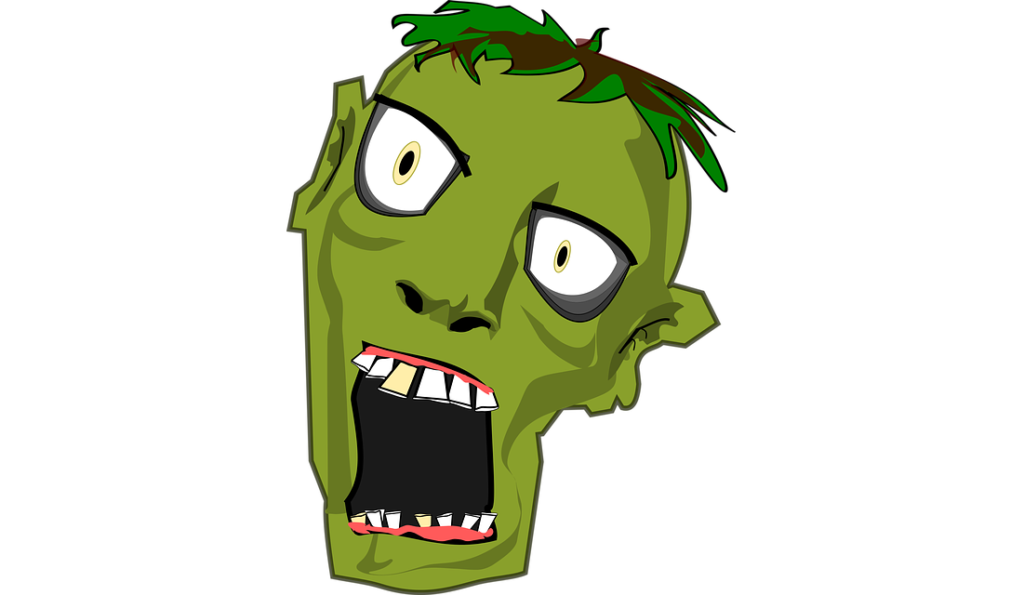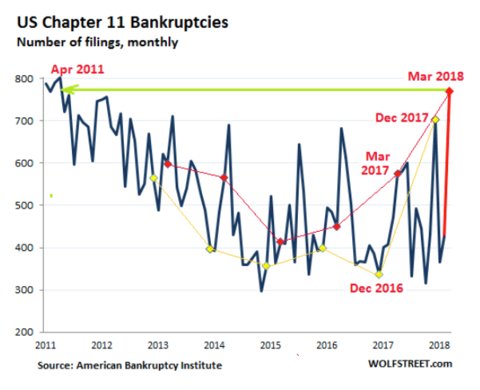Is a Zombie (Company) Apocalypse Upon Us?
by Peter Schiff, Schiff Gold:
 Rising interest rates could unleash a zombie company apocalypse – if the Fed lets it happen.
Rising interest rates could unleash a zombie company apocalypse – if the Fed lets it happen.
Corporate bankruptcy levels in the US hit seven-year highs last month.
New Chapter 11 bankruptcies surged 63% year-over-year in March. All-told 770 companies filed for Chapter 11 protection last month. That is the highest level since April 2011.

According to Business Insider, corporate bankruptcies normally spike in April and ebb late in the year. But last December, filings spiked 61% from November to the highest level for any month since April 2013. The December surge in bankruptcies was an ominous sign – and it looks more ominous in light of March data.
This could just be the proverbial tip of the iceberg. As interest rates climb, we’re likely to see the number of corporations going under continue to climb.
The yield on 10-year Treasuries cracked through the 3% level this week. This represents the cost of servicing government debt. As a Palisade Research article pointed out, “The U.S. Treasury will get funded no matter what – foreigners will buy the debt, or the Fed will print dollars to do it. Either way, they will borrow – no matter the cost. But individuals and companies that borrow aren’t as lucky. They’re forced to pay the higher interest payments.”
According to Palisade, there is over $7.5 trillion in debt floating around out there that is highly vulnerable to rising interest rates.
To evaluate business sector debt, we need to look at the LIBOR rate. As Palisade explains it, “LIBOR stands for London Interbank Offered Rate and is a benchmark rate that the world’s leading banks charge each other for short-term lending. It’s the first step when calculating interest rates on various kinds of loans – whether government bonds, corporate bonds, mortgages, or student debt.”
The LIBOR rate tends to move in tandem with the Federal Reserve Funds Rate, historically remaining slightly above it. Using Fed data, JP Morgan calculated that there is about $7.5 trillion in pure LIBOR-related debt. According to Palisade:
Syndicated loans (loans offered by a group of lenders to provide funds to a single borrower) are 97% tied to the LIBOR rate. Both corporate and non-corporate business loans and commercial mortgages are about half tied to LIBOR. To put this in perspective, a 35-basis point increase could raise business loan interest costs by $21 billion. So, with yields rising – both on the short end and the long end of the curve – this could hurt the business sector. Which means the stock market.”



